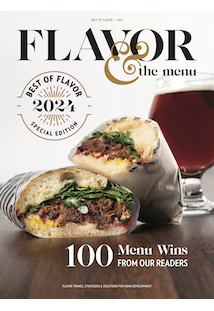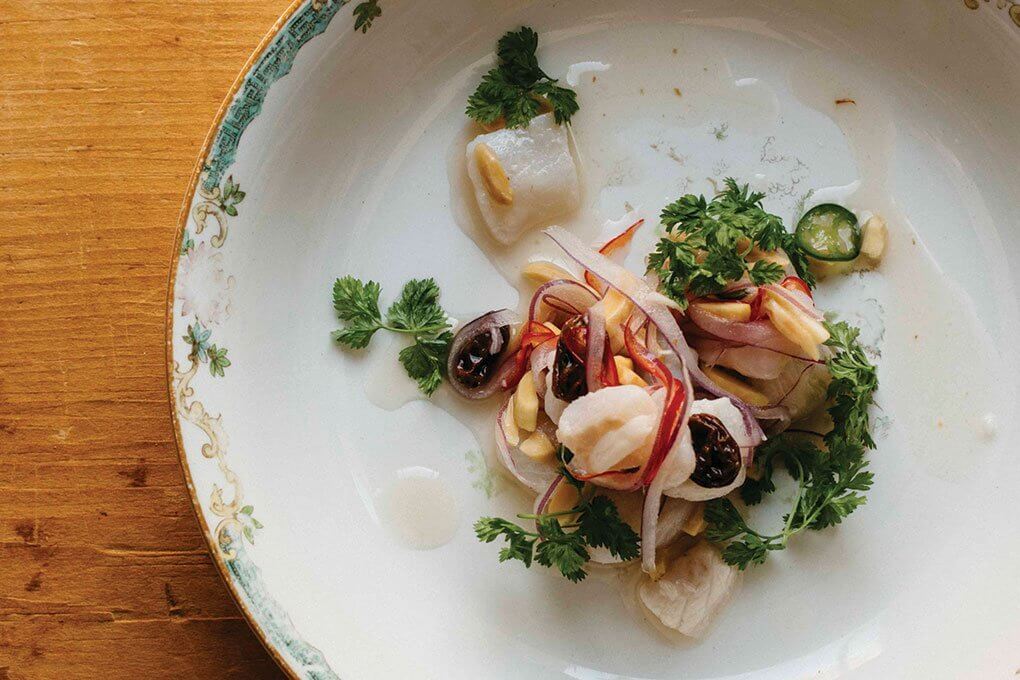Every myth propagated successfully, regardless of how inaccurate the overall message might be, attaches itself to a modicum of truth. When dispelling myths about seafood, it’s crucial to acknowledge those slivers of truth in order to separate fact from fiction, and explore the nuanced answers to the tough questions about sourcing, preparing and serving wholesome, responsibly-sourced seafood.
MYTH #1
Sourcing sustainable seafood is too hard
The huge body of information and misinformation available on the topic of sustainable seafood can make it seem like a daunting task. Sustainability is a diverse topic that includes impact on oceans, communities, transport and waste associated with seafood’s path into our kitchens. Turn to trusted eco-labels that rate species’ sustainability, read the fine print on the product’s country of origin, look at seafood industry guidelines, and take advantage of trusted suppliers’ own internal sustainability programs. Establish a process that enables you to turn to each of these sources for the specific pieces of information you trust from them, and in the process, create a deeper understanding of the sustainability issues involved with the worldwide seafood trade. Think of it as a challenge, not a roadblock. For a list of these online sources, go to www.getflavor/seafood.
MYTH #2
Wild-caught seafood is more sustainable than farmed seafood
This statement represents a false choice. Sustainable, delicious seafood comes from both wild fisheries and aquaculture operations. Both have had issues with quality and sustainability in recent history. But our responsibility as chefs is to choose reputable producers in both arms of the industry who can deliver sustainability and the quality of seafood we demand.
MYTH #3
Fresh is better than frozen
Recent technological advances in the seafood supply chain have transformed the freezing process from an outdated system for arresting spoilage to a proactive means of capturing the pristine quality of fresh seafood (see p. 18 for more).
MYTH #4
Seafood carries high level of toxins
This widely held perception is rooted in valid concerns about contaminants found in some seafood. Methylmercury is the most common contaminate discussed in connection with seafood, and the legitimate calls to limit consumption of just a few species has cast a shadow of doubt over the entire food category. The majority of seafood does not contain harmful levels of toxins. We should make careful choices for the species that make the menu. But we should also commit ourselves to serving far more seafood than we currently do as a matter of public health. For more information about seafood and health, visit www.SeafoodNutrition.org.
MYTH #5
Customers are afraid to try new species of seafood
Well, this one is kind of true. But it’s not really anyone’s fault. Many chefs and consumers are equally unfamiliar with the diversity in our oceans. Most chefs have not had much opportunity to work with different species nor have we been able to give customers the chance to experience them. And that makes diversity in seafood offerings an opportunity. Sure, every eater is not going to be familiar with every species. But most are familiar with the qualities of the major types of fish—like how flaky white fish is generally sweeter, or meaty fish typically has a more robust flavor. We are the professionals and it is both our opportunity and our responsibility to guide guests to embrace culinary discovery. Remember when tomatoes were pink and apples only red or green? Chefs introduced diners to heirloom vegetables and heritage animals. Now it’s our turn to do the same with seafood. Frame this opportunity correctly and the customers will bite.
MYTH #6
Seafood is too expensive
Yes, seafood can be a high ticket menu item. That, coupled with the fact that it is highly perishable, can cause anxiety for any foodservice operator. But the species that are very expensive are so because of the high demand for them. We as chefs drive the price of seafood up by continuing to buy only the popular varieties. There is a whole ocean of supply available from which chefs can select cost-effective, delicious, seasonal offerings. For example, cod may be a choice too pricey for your food cost but its close culinary kin, dogfish (or haddock, hake or Pacific rockfish), grants us access to other varieties of flaky white fish that present a more affordable stand-in for their famous cousin.











